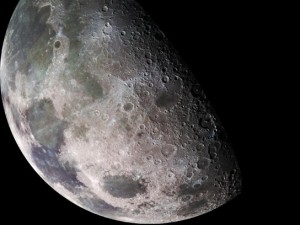NASA publishes new videos of the Moon
Wednesday, March 14th, 2012 7:55:38 by Taimoor Tariq
During its mission, the Galileo spacecraft returned a number of images of Earth’s only natural satellite. Galileo surveyed the moon on Dec. 7, 1992, on its way to explore the Jupiter system in 1995-1997. This color mosaic was assembled from 18 images
taken by Galileo’s imaging system through a green filter. On the upperleft is the dark, lava-filled Mare Imbrium, Mare Serenitatis, Mare Tranquillitatis, and Mare Crisium, the dark circular feature toward the bottom of the mosaic. Also visible in this view
are the dark lava plains of the Marginis and Smythii Basins at the lower right. The Humboldtianum Basin, a 400-mile impact structure is partly filled with dark volcanic deposits
Although the moon has remained largely unchanged during human history, our understanding of it and how it has evolved over time has evolved dramatically. Thanks to new measurements, we have new and unprecedented views of its surface, along with new insight
into how it and other rocky planets in our solar system came to look the way they do.
Every year, our only moon never seems to experience change. Craters and other formations on its surface seem to be permanent now. However, this wasn’t always the case. Scientists have successfully been able to learn how moon evolved with the passage of time
into what it looks like today.
Tags: Amin Fahim, Fakhir, NASA, Salala Chekc post
Short URL: https://www.newspakistan.pk/?p=15811

















